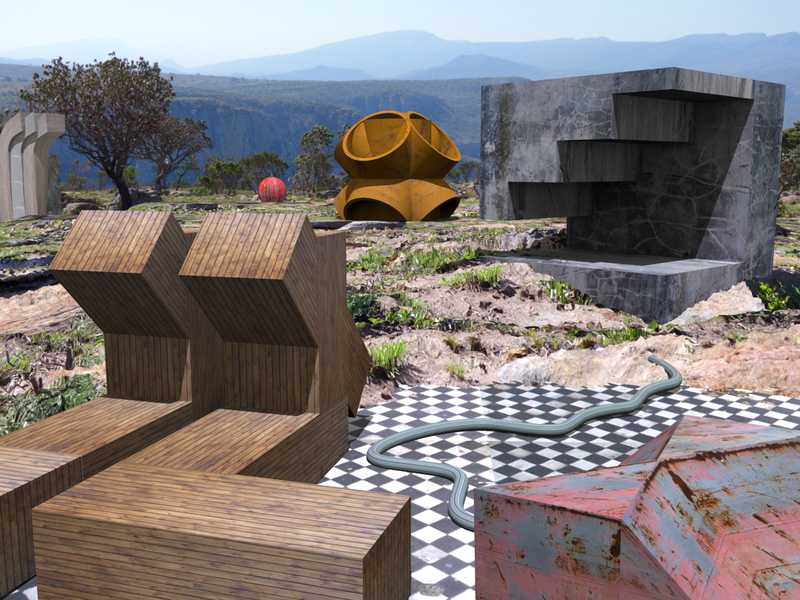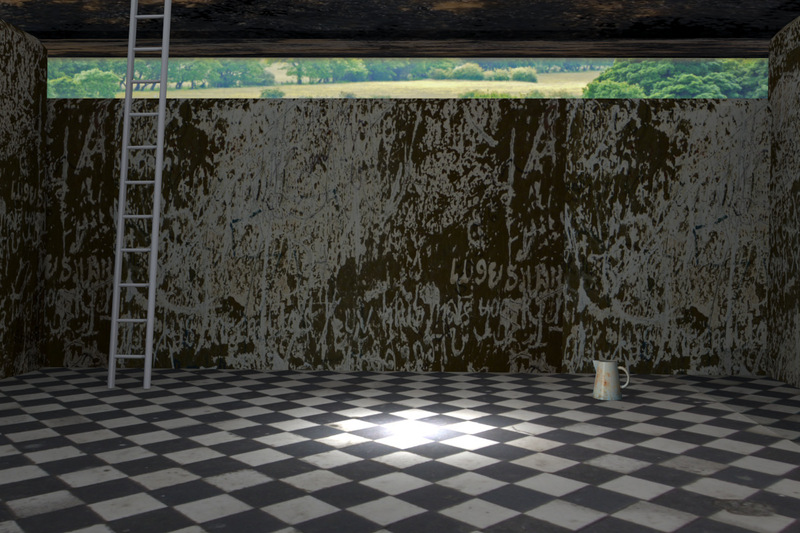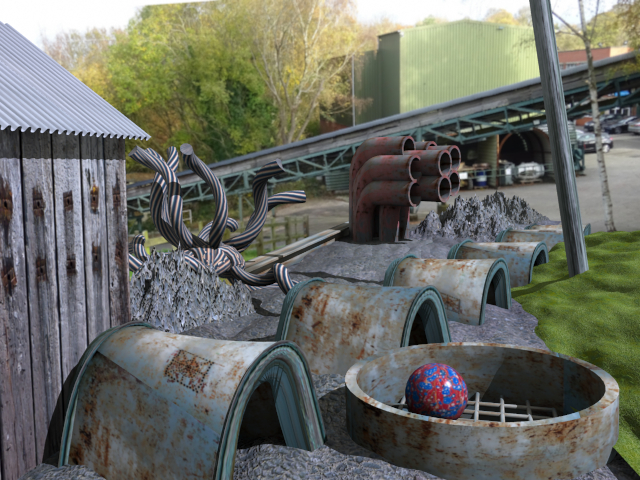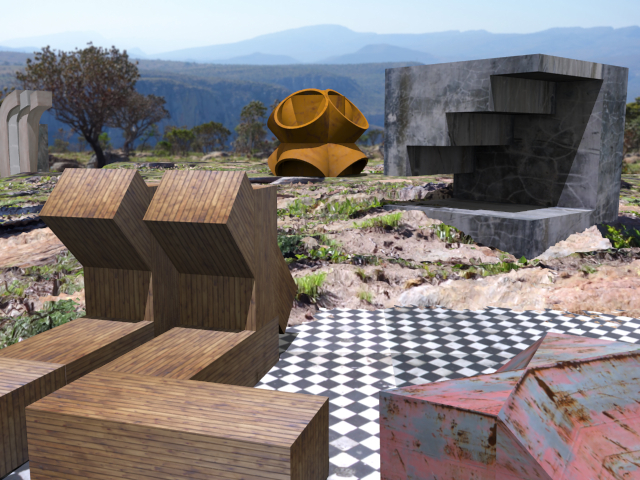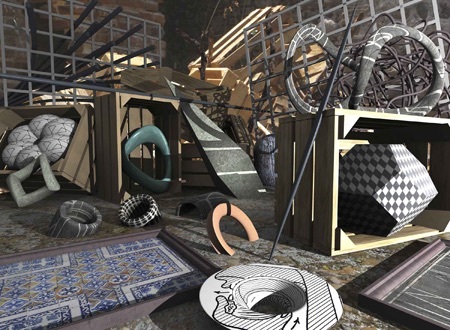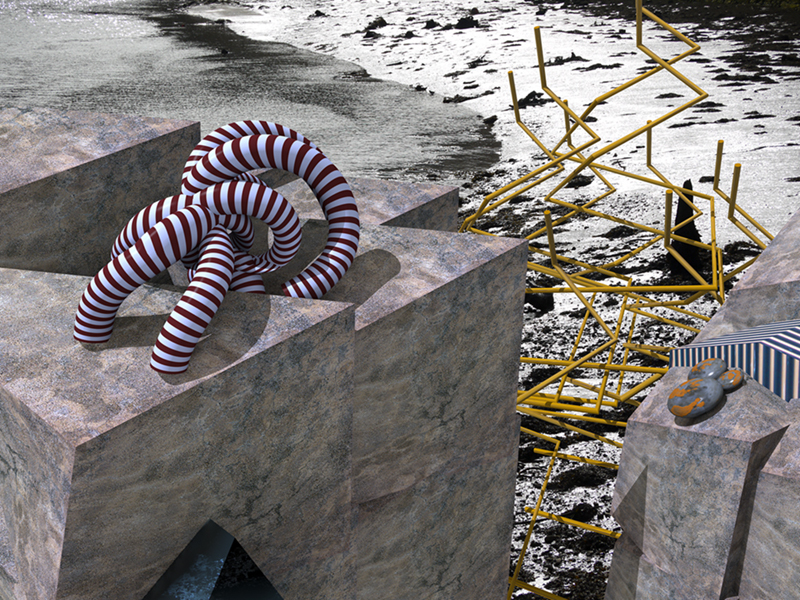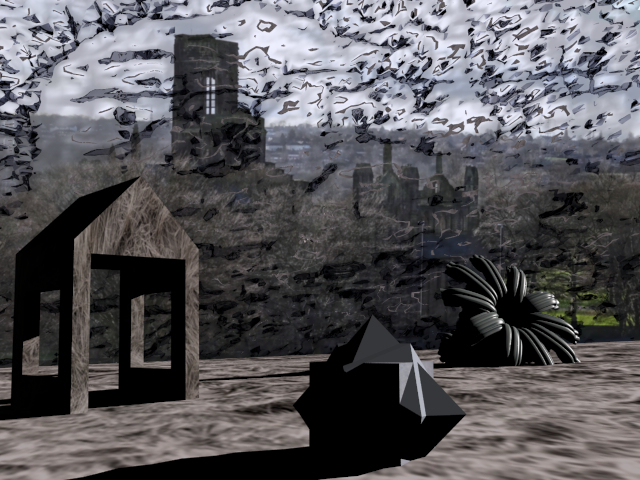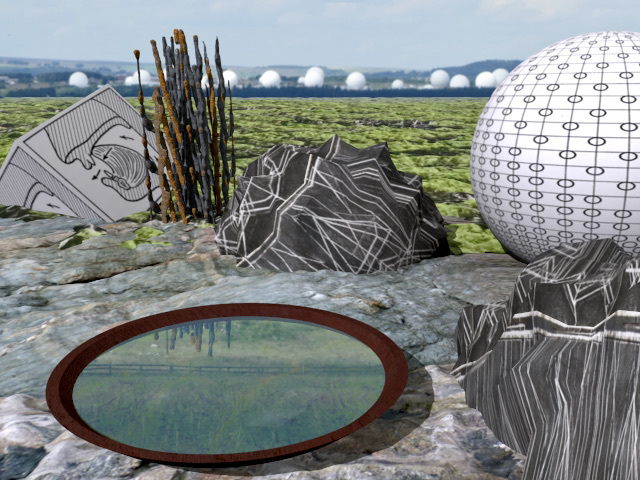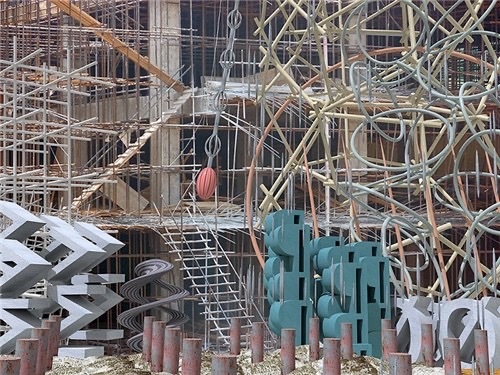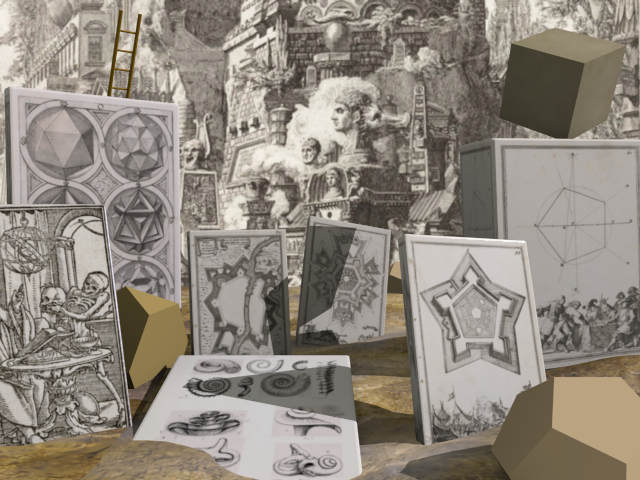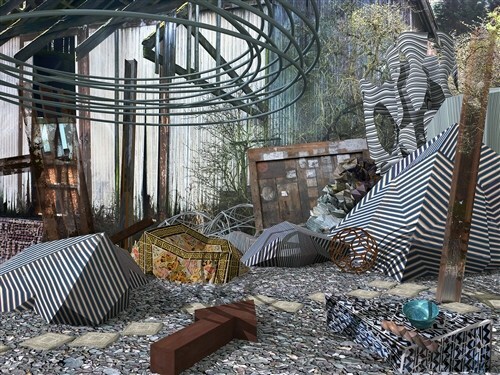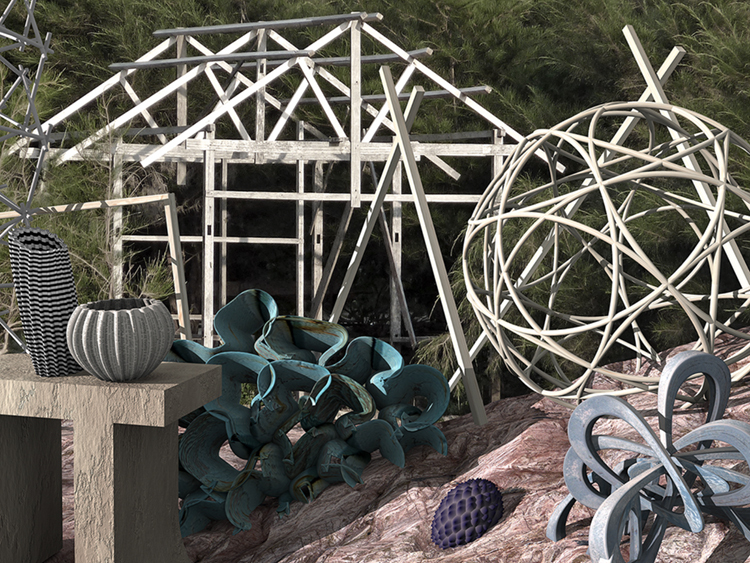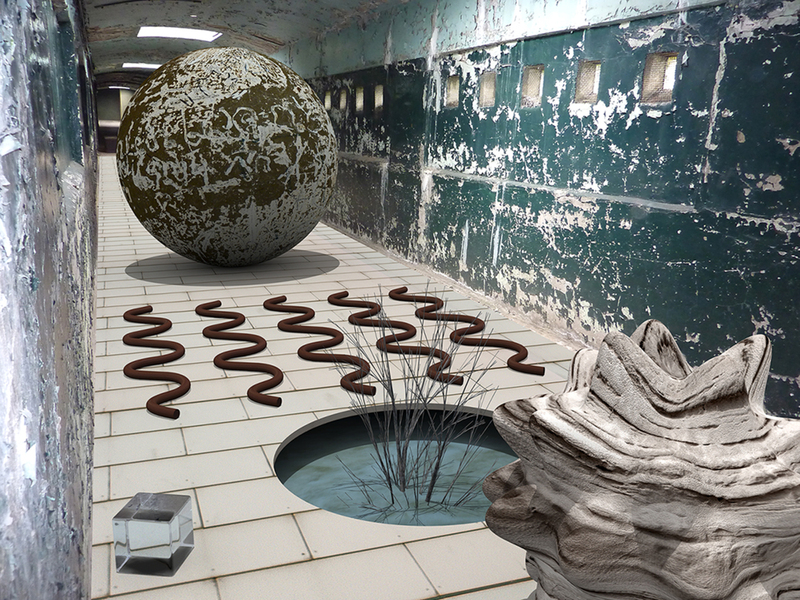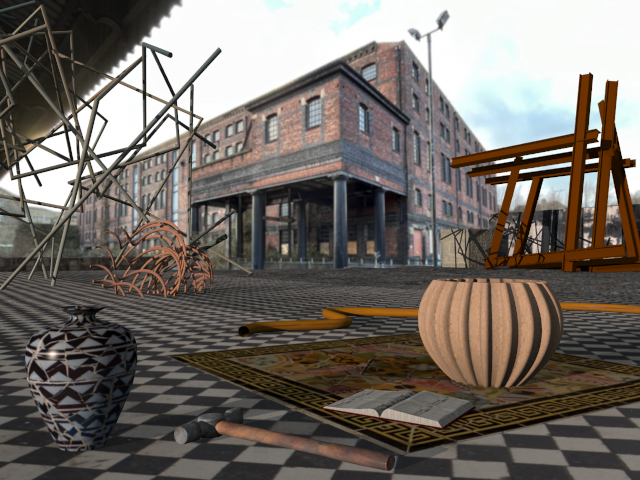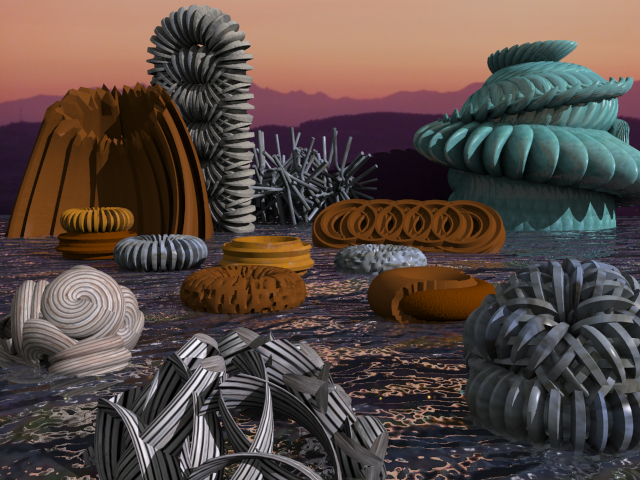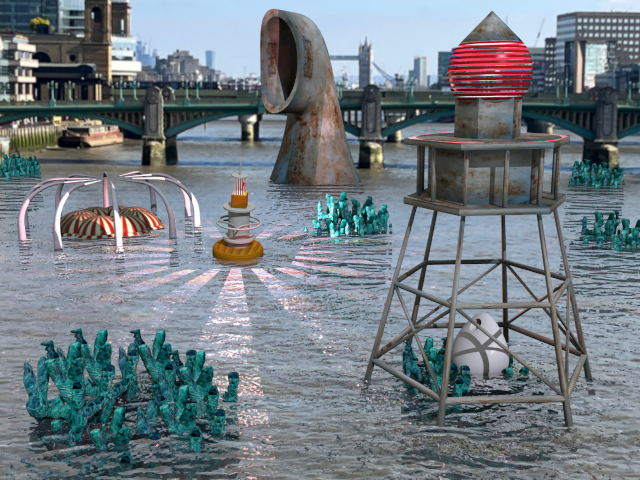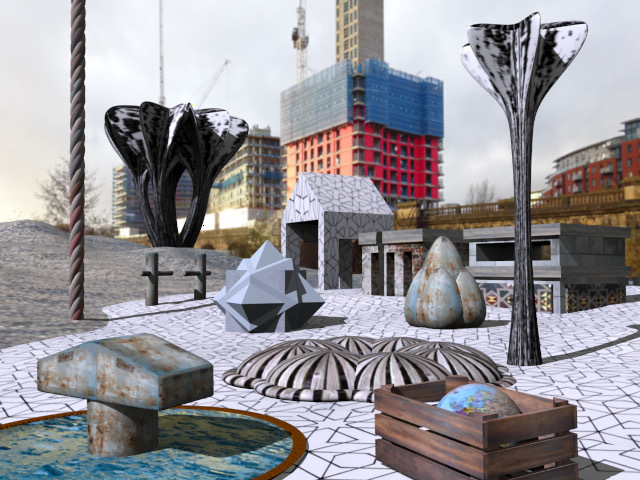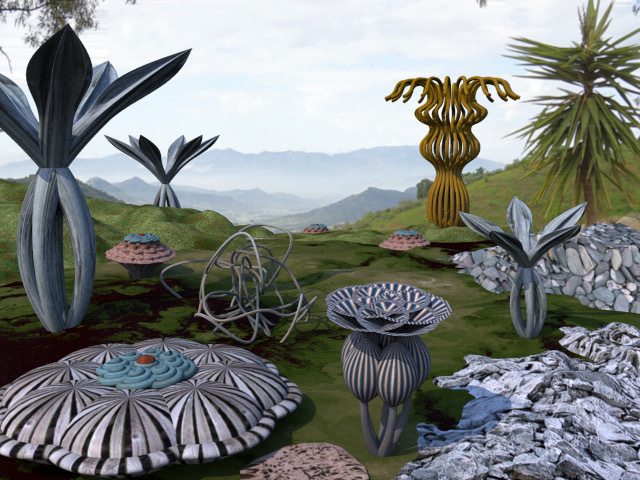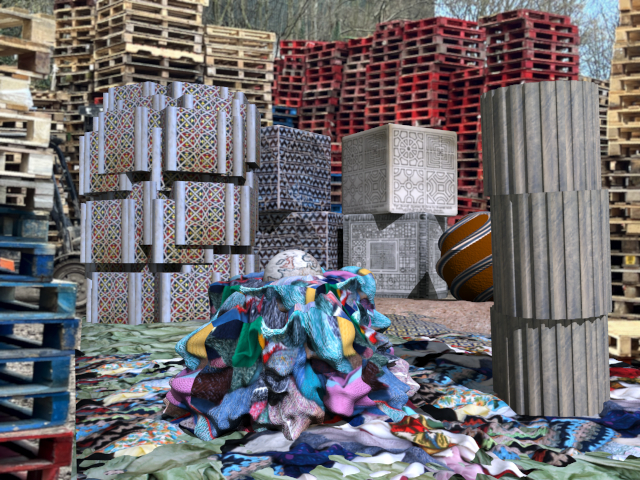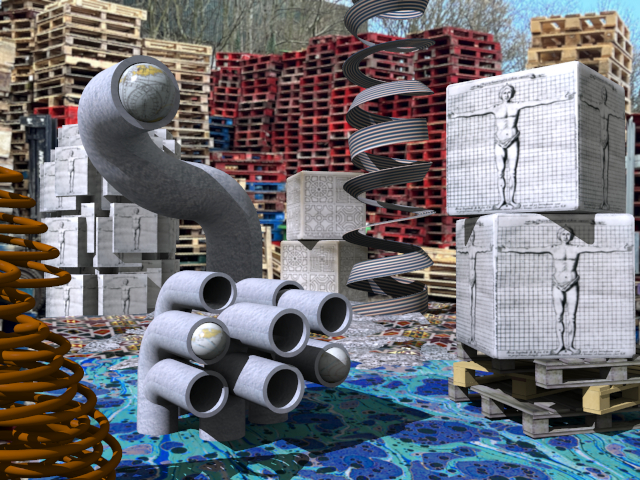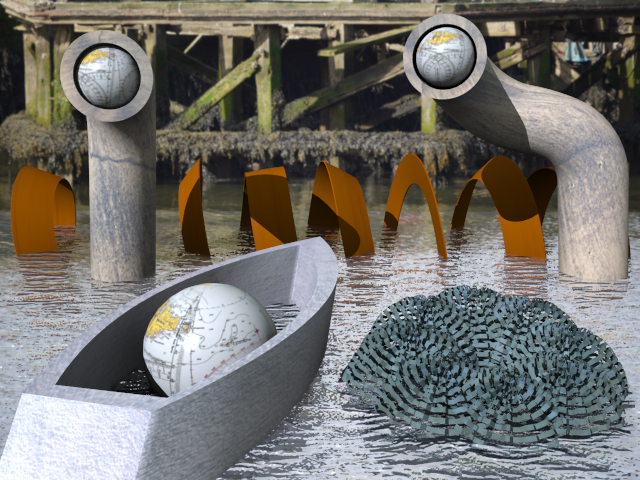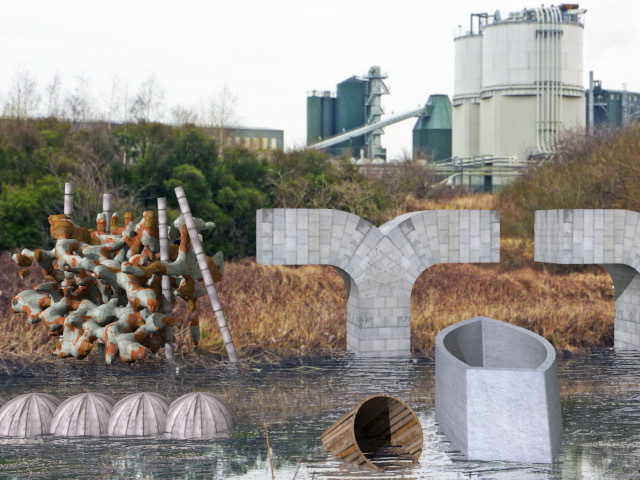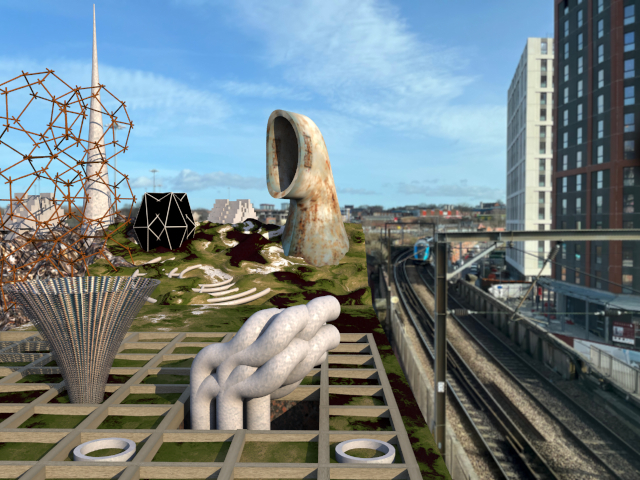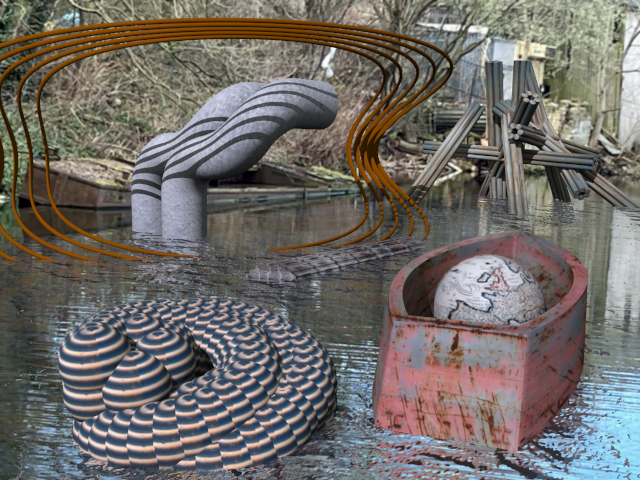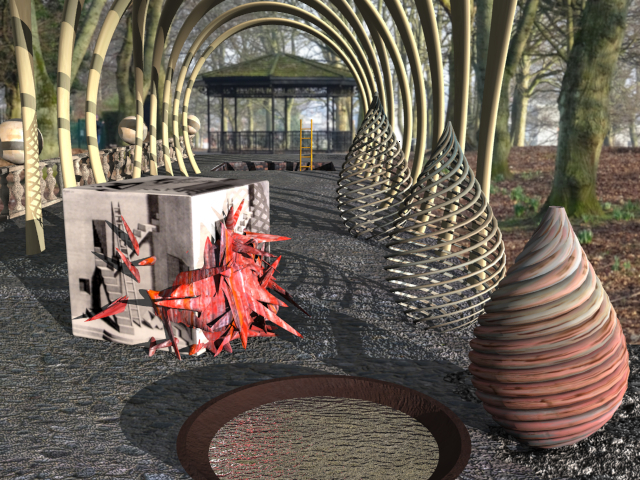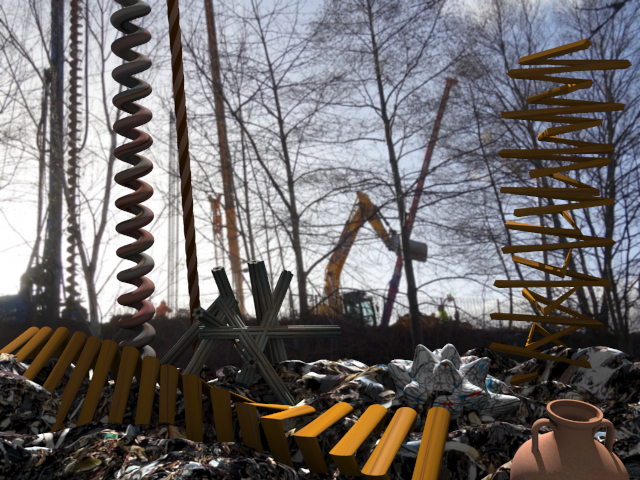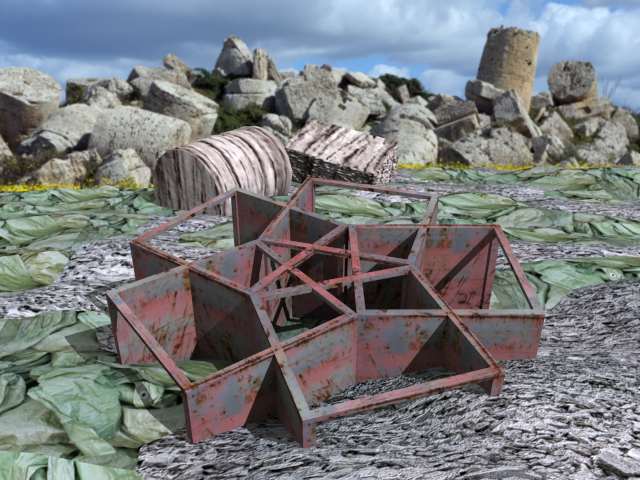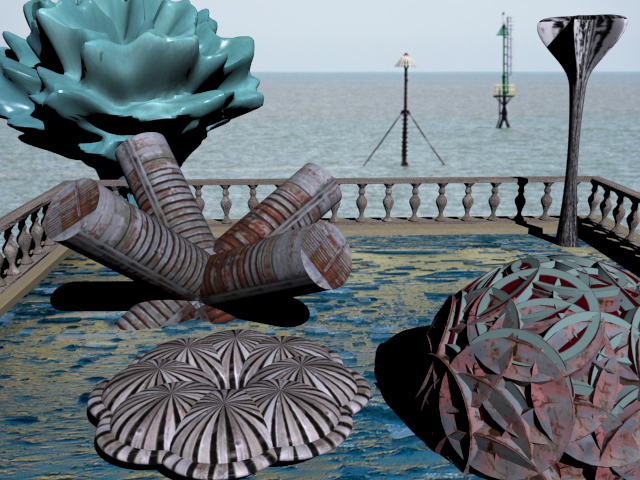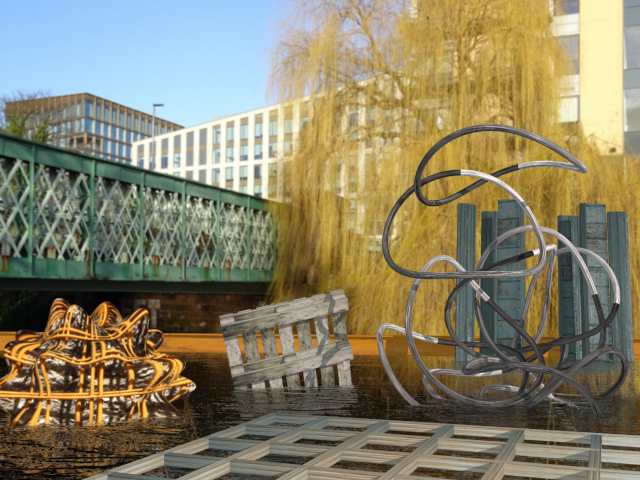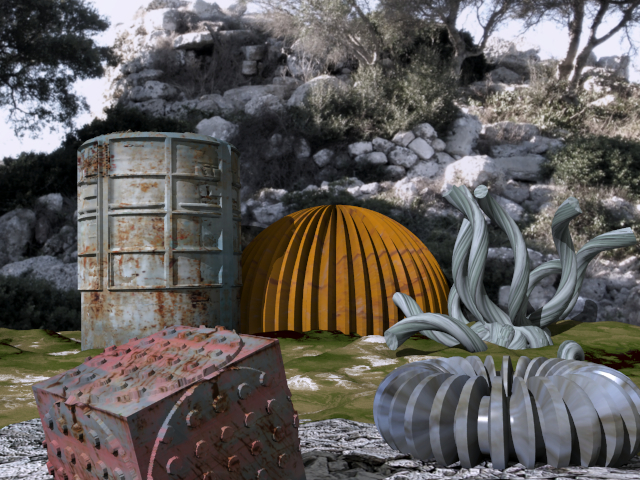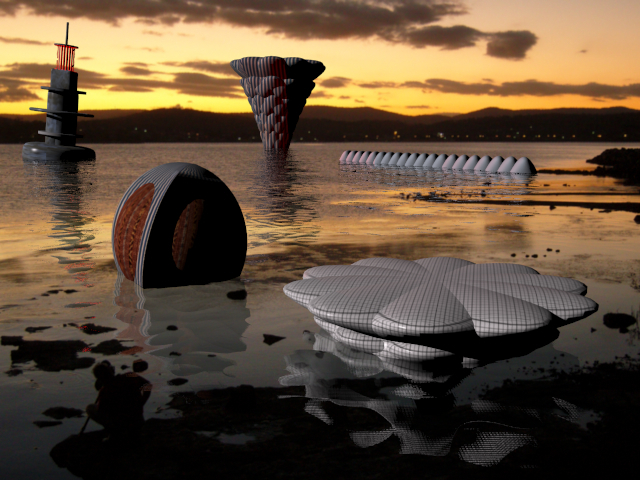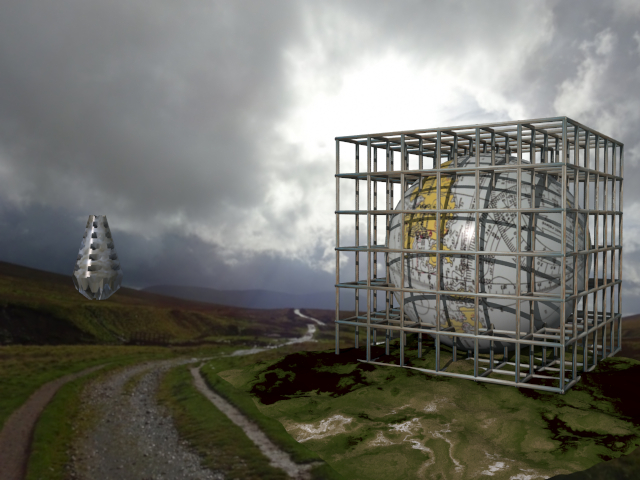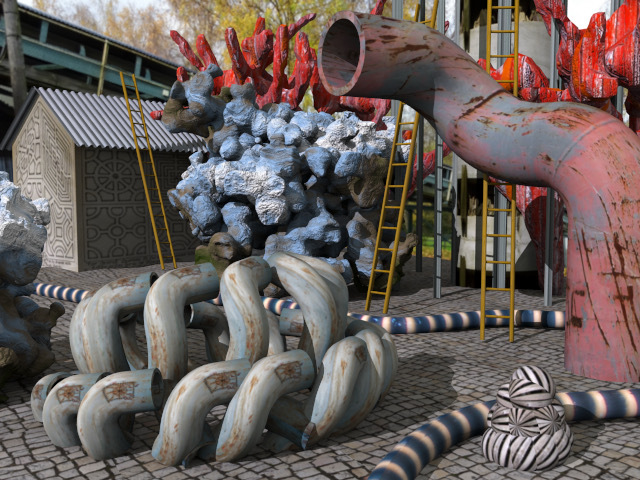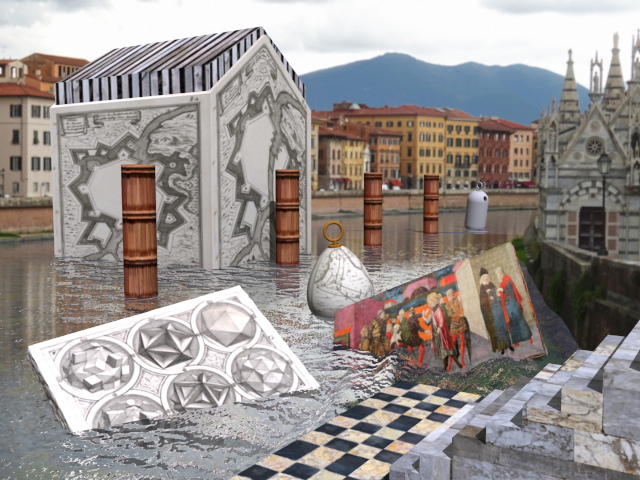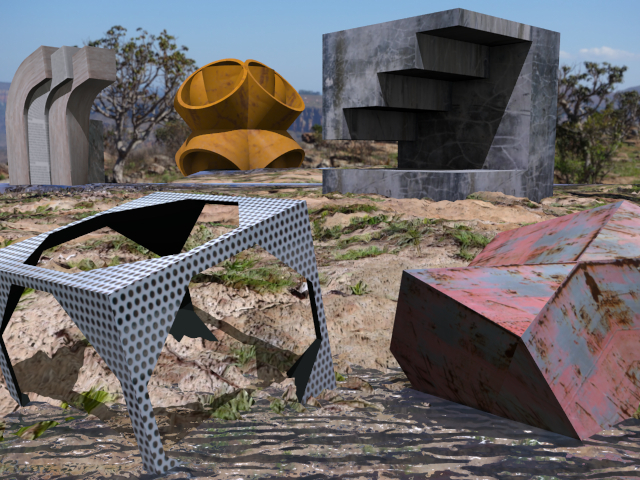Gordon Cain West Yorkshire, United Kingdom
The work I produce refers to the tradition of sculpture and sculptural installation. It exists alongside and maybe 'stands for' sculpture in the virtual realm.
DEPICTING AND BREAKING ROCKS IN THE VIRTUAL REALM
Observed in the wild, in an unmodified, uncultured state, rocks, boulders and stones have mass, weight and an exterior that tells us about the interior. The surface tells us about the matter within. In reading the surface we think we have a reasonable understanding of the interior and can safely infer that the substance remains constant, and unvaried from surface to depth.
Issues of surface and depth remain a common sculptural concern and not just in relation to rock/stone. To reiterate; what is an objects surface saying about the material within? In traditional sculpture, the stone is often carved to represent other materials; flesh, fabric, leather, wood etc. When looking at such work do we attempt to mentally penetrate to the interior?, or is our attention held on the surface, in order to maintain the illusion, the pretence of another material.
With very few exceptions/anomalies rocks in nature do not have a skin, a shell, a hard exterior and a soft or voided interior. When creating rocks, boulders, pieces of stone in the virtual realm of 3D modelling software, the form is always ‘made’ first. The surface appearance and texture are then applied, providing a specific material identity. But in this case the texture is indeed rather like a skin, covering, coating and wrapping the form. The forms themselves may suggest a particular type of rock/stone, but it is the applied surface that gives the haptic feedback and geological reference. Over the years I have created an image bank of textures. Simply high resolution photographs of the surface of materials, with which I skin the forms. I shun found images as a matter of principle. Rocks, stones, boulders only occasionally feature in the work, and usually in association with virtual sculptural forms. They become a sort of ‘stand in’ for nature. In making the work I rely on my knowledge of materials formed during the time when I made sculpture in the real world - the studio. I don’t think I could make work in the virtual realm had I not done so. Mental and muscle memory recall the weight, feel and behaviour of raw ‘stuff’. (A wonderfully neutral word first shockingly introduced into the sculptural vocabulary I believe, by Barry Flanagan in the mid sixties. It’s very neutrality was liberating at the time, encouraging an unqualified, fresh response to material). I acknowledge the problems of making work grounded partly in recall, however to quote W.G. Sebald, (1). “There are many difficulties to be reckoned with in the recollection of things”. The pieces I produce in print form are not proposals for sculptural installations in the real world, as observers sometimes assume. They could not exist and therefore can have no consequences in the material world. This is a fundamental failing. The work can only have consequences if you can trip over it. If the rock can be broken. In discussing the writing of Stanislav Lem, John Gray says: “I was put onto the promise and, on the other hand, the dangers of virtual reality by something written by Stanislav Lem in the 1960s. He talked about a machine, which would enable people to live several different lives, rather than just one ending irrevocably in death. He thought it was achievable. This is a certain kind of consolation in materialism. Rust and error defeat the perfect virtual reality machine.” 1. W. G. Sebald. From the forward to ‘A Place in the Country’ 2. John Gray, discussing Stanislav Lem. ‘The Soul of the Marionette’
Gordon Cain
